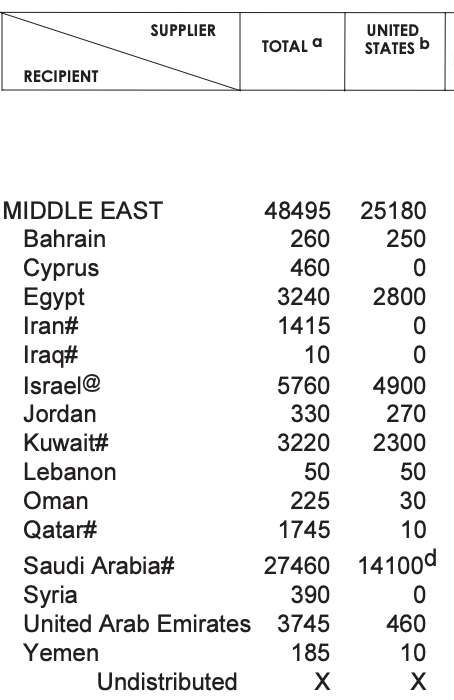While these figures are somewhat dated, the general trend in U.S. military transfers has held steady in this region of the world.
International Recognition Supports Lower, Stable Oil Prices
The U.S. has also had non-Jewish immigrants from the Middle East and North Africa since the 18th century, but. But immigrants to the U.S. from this region have been disproportionately non-Muslim relative to the source populations and the Muslim population of the U.S., and until the last few decades, the U.S. has had a much larger Jewish population than its Muslim population. Further
Furthermore, the Jewish population of the U.S. has been highly concentrated in the Northeast and a few other population centers in the U.S. that has made it possible for Jewish culture and Zionist (i.e. pro-Israel) sentiment in those communities to remain strong. In contrast, the U.S. Muslim population, even hasas it has grown in recent decades has been more diffuse and less well established at a community scale.
There is also cultural similarity and comfort between the U.S. and Israel. Israel is a country of people who mostly have European ancestry, like most Americans, and unlike other peoples of Southwest Asiathe Middle East and North Africa, and. Israel also has one of the most advanced economies in the region, with an economy that is more similar to that of the U. This hasS. These similarities have fostered some sense of relatively likemindedness with Israel that is not shared with other countries in the region.
So, of the U.S. political factions that care about Israel, one way or the other, these factions have historically been predominantly strongly pro-Israel.
As a result, since at least the 1970s, the U.S. has been the leading political patron of Israel in world affairs for most of its history. Therefore, securing international recognition for Israel and preserving its long term existence has been a widely shared goal of American diplomacy on a bipartisan basis which these effects help. Efforts to secure international recognition of Israel helps advance these goals.
